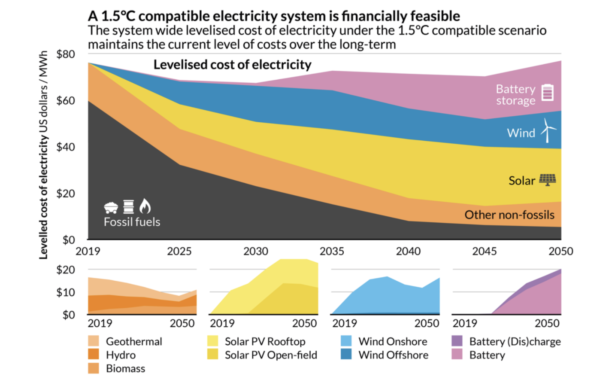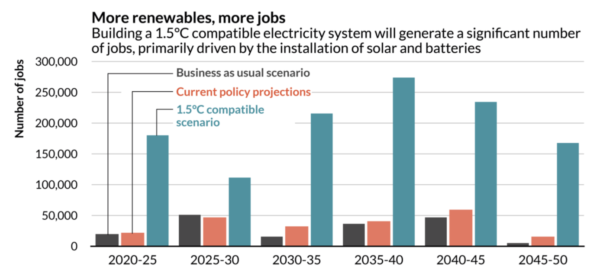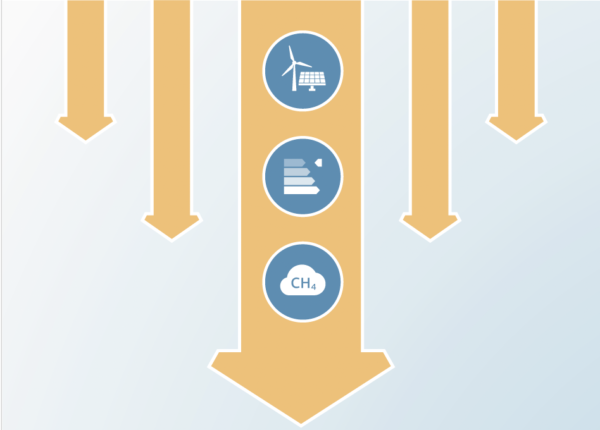A 1.5°C future is possible: getting fossil fuels out of the Philippine power sector
Authors

Executive Summary
The Philippines is on the global warming frontline, with its archipelagic structure contributing to heightened susceptibility to rising sea levels, changing weather patterns, and exacerbated extreme events including typhoons and deadly heat and humidity, all of which aggravate the risk to its large energy infrastructure.
The Philippines is also one of the fastest-growing developing countries: poverty is in decline, access to energy is rising and, with that, demand for energy services. However, fossil fuels still dominate the energy system, accounting for 78% of power generation in 2022.
This report - perhaps the most detailed 1.5˚C scenario modelling for the Philippines power sector to date - sets out what the Philippines government needs to do to get the country’s power sector onto a 1.5˚C compatible emissions pathway, replacing fossil fuels with renewable energy. We find it entirely feasible.
It offers concrete policy suggestions for the Philippines to accelerate the fossil fuel phase-out while simultaneously tapping into the techno-economic advantages of renewable energy. It estimates the renewable energy potential for the country, considering affordability, and including diverse eligibility constraints on land and technical feasibility in terms of grid planning. Analysis of the scenario results and their policy implications have been validated through a stakeholder consultation process.
Key findings:
The Philippines must urgently phase out coal-fired power by 2035, and almost entirely phase out gas-fired generation by 2040. This report finds this is not only feasible but will benefit the economy and provide more than a million jobs by 2050.
The Philippines' power sector is not yet aligned with the country's current emission reduction targets, let alone with 1.5˚C, so the government needs to strengthen those targets and align them with a 1.5˚C compatible emissions pathway.
This means a well-defined plan for an expedited coal phase-out and expanding renewable energy to 99% coverage by 2050. The government must make this a top priority in its climate and energy policy.
The draft Philippines Energy Plan 2023-2050 sees a growth in renewables, but a substantially lower share in 2050 (at 63%-72% under different scenarios) than the near-100% renewables system needed to meet a Paris Agreement-compatible emissions pathway for the power sector.

The Philippines has enough cost-effective renewable resources to both replace fossil fuels in the power sector and meet future energy demands.
The Philippines has abundant renewables potential, estimated at around 1,200GW, comprised of solar rooftop, open-field solar and onshore, offshore wind energy.
To meet future electricity demand and phase out fossil fuels, we show an additional 152 TWh of renewable generation would be required by 2050, compared to the current policy projection based on the draft PEP2023's clean energy scenarios.
It's also clear the Philippines' power sector can attain a 1.5˚C compatible emissions pathway without resorting to false solutions like retrofitting the coal fleet for green hydrogen, carbon capture and storage, or building new nuclear power capacity.
Shifting towards a 1.5°C pathway would reduce electricity costs in the Philippines; planning for infrastructure development with international financing is crucial.
Phasing out coal plants is an economic necessity, and renewables suitable for the Philippines, like open-field and rooftop solar, are highly cost-competitive. We find the levelised cost of electricity (LCOE) under the 1.5°C compatible pathway decreases by 12% between 2019 and 2030 and reaches 2019 levels in 2050.
Cost of storage plays a crucial role in determining the overall LCOE in a 1.5°C pathway. It is important to put forward policy planning in place to reduce storage requirement by efficient demand projection, investing in demand side solution and sector coupling which increase grid’s ability to host variable renewable energy.
Importantly, the LCOE is impacted by the cost of capital, so lowering the cost of capital through, for example, low-cost international finance or government subsidies, can reduce the cost of financing, making it more attractive to investors and potentially accelerating the transition.
This shows that international financing is crucial to develop proper infrastructure to support transition to a 1.5°C compatible pathway, addressing historical responsibility, aiding vulnerable communities, and encouraging sustainability and global cooperation in tackling climate change.

As the share of renewables increases in the power mix, their contribution to the LCOE rises, unlike fossil fuels. Post-2035, the deployment of storage technologies contributes more and more to the overall LCOE. As a result of reduced dependence on coal and gas imports, the LCOE in a 1.5°C compatible pathway is more stable than under BAU and CPP pathways.
A 1.5°C emissions pathway will enable the Philippines greater self-sufficiency by reducing dependency on imported energy.
Our analysis shows that transitioning towards a 1.5°C pathway will remove the Philippines' dependency on imported fossil fuels altogether by 2030, compared to the business as usual (BAU) and current policy projection (CPP) scenarios.
A continued high dependency on imported fossil fuels will make the Philippines more susceptible to economic and energy security related risks.
Phasing out coal and replacing with renewables in the Philippines will generate jobs.
The estimated average job potential of the 1.5°C scenario exceeds that of the BAU and CPP on average by almost 7 and 5.5 times from 2020 to 2050, summing up all job types and technologies that were assessed.
Overall, in the 1.5°C scenario, the Philippines has the potential to create approximately 30,000 more jobs per year by 2030, around 48,000 additional jobs annually by 2040, and 40,000 jobs by 2050.
Strategic, long-term planning is crucial in developing the skills of the workforce currently engaged in fossil fuel-based power generation, essential to ensuring a Just Transition for these workers into the emerging job opportunities in the renewable energy sector.

A policy push is needed to strengthen ambition, incentivise investment, streamline processes and protect biodiversity. Grid planning and development is crucial for the Philippines' transition towards a 1.5°C pathway.
In Chapter 2 we set out a series of policy recommendations for the government. Accelerating the phase-out of coal-fired generation requires the support of clear government policies and collaborative initiatives, also involving private power plant operators and stakeholders:
- Defining priority criteria for the schedule of a fossil fuel phase-out is crucial, whether the emphasis is on the economic or health benefits of such a transition. Various perspectives may emerge from national and regional policymakers regarding the prioritisation of fossil fuels for phase-out from power sector.
- Channelling investments into renewable energy sources and grid development is of paramount importance, building upon existing frameworks such as renewable portfolio standards, feed-in tariffs, and green energy auctions.
- Considering the vulnerability of the Philippines' energy infrastructure to extreme climate events, it becomes imperative to introduce investment de-risking measures to entice potential investors. These measures may encompass incentives such as risk insurance, tax exemptions and government support. It is also important to enhance financial support in form of grant rather than loan.
- To overcome obstacles in the deployment of clean energy sources and prevent curtailment, it is imperative to establish long-term, all-encompassing roadmaps for grid development. These roadmaps should be informed by data-driven strategies.
- As one of the 18 mega-biodiverse countries globally, the Philippines requires improved mapping of ecologically valuable areas, along with the implementation of stringent guidelines and reporting standards. These measures are essential to ensure biodiversity and ecosystems are protected in the transition to renewable energy generation and grid infrastructure development.











